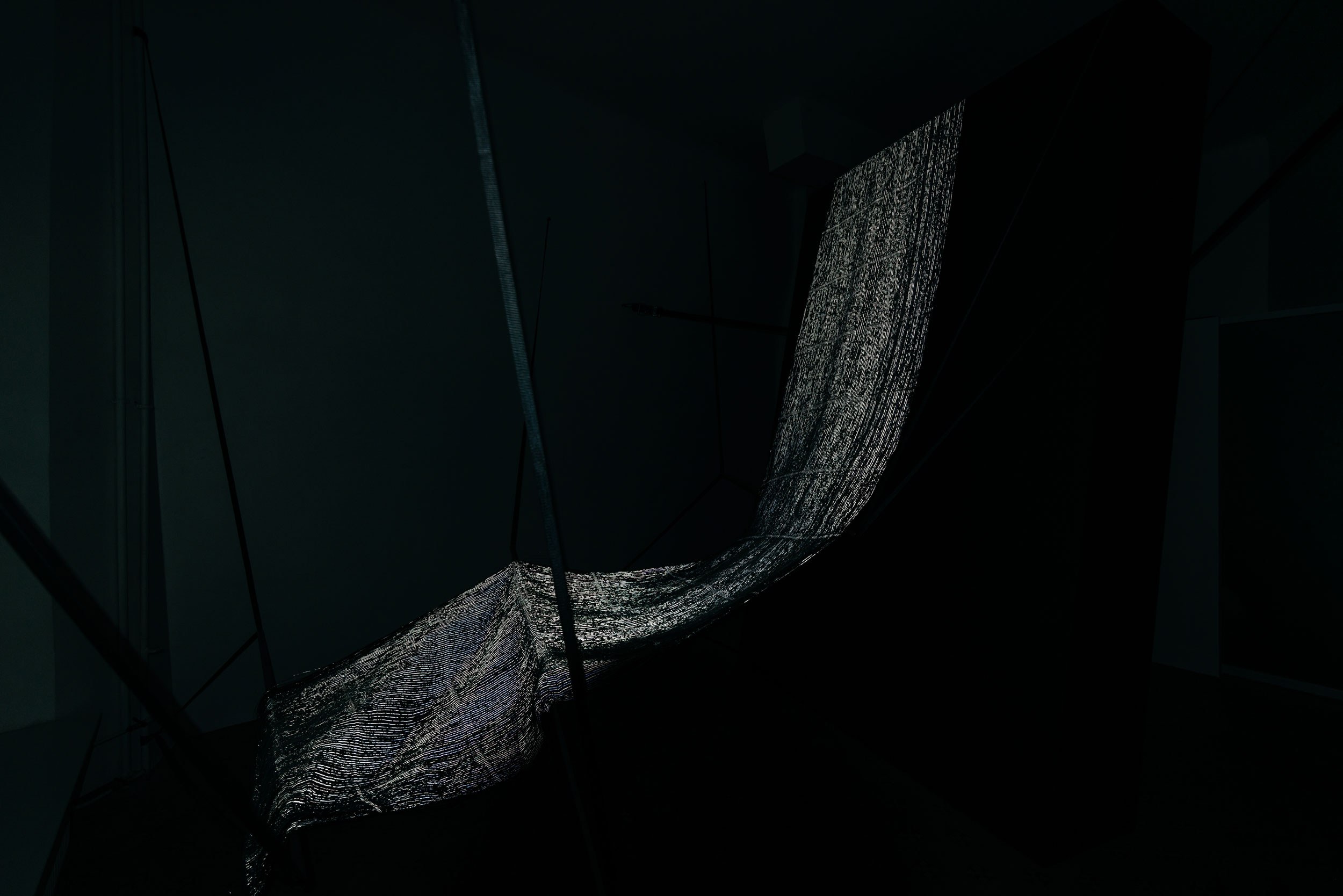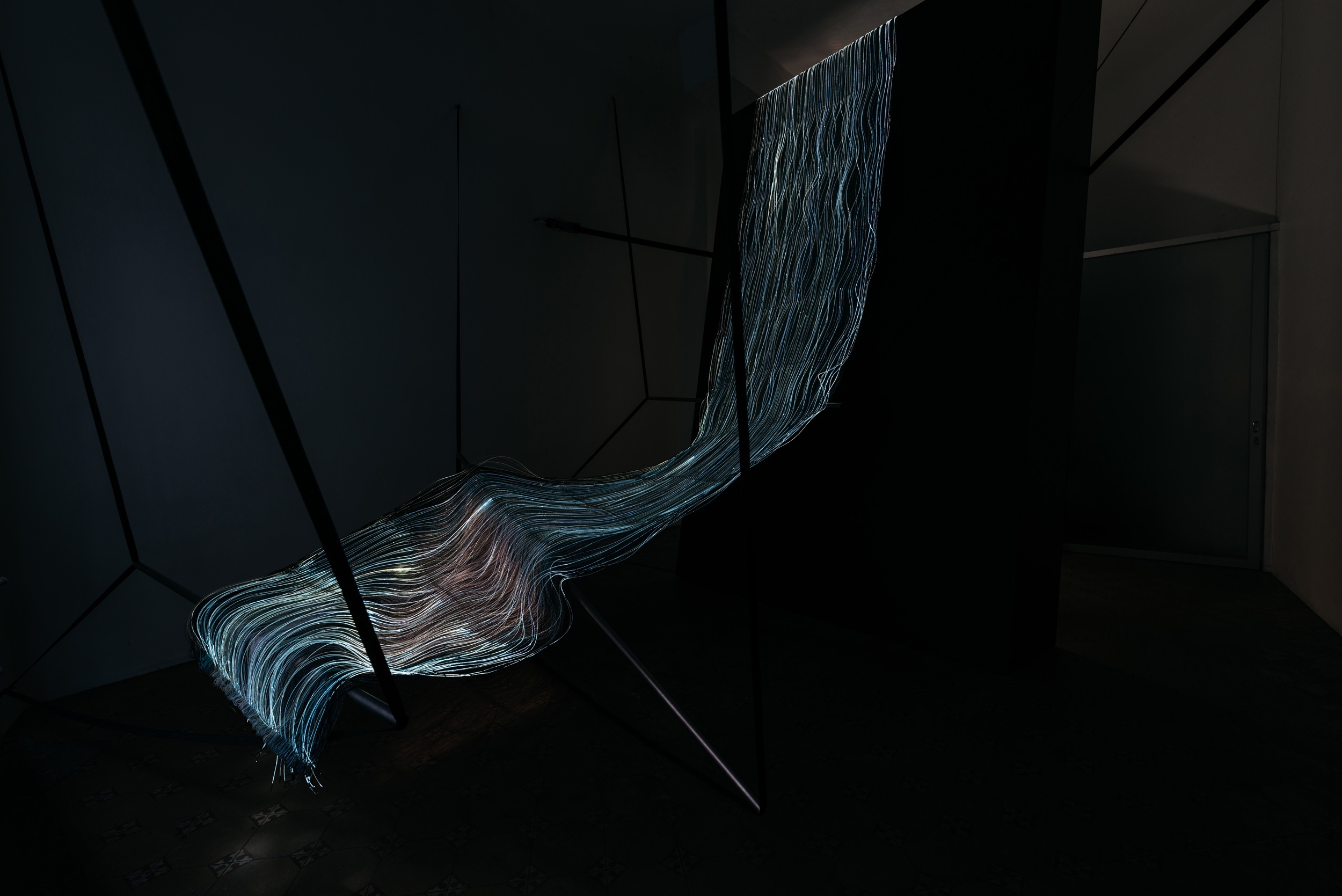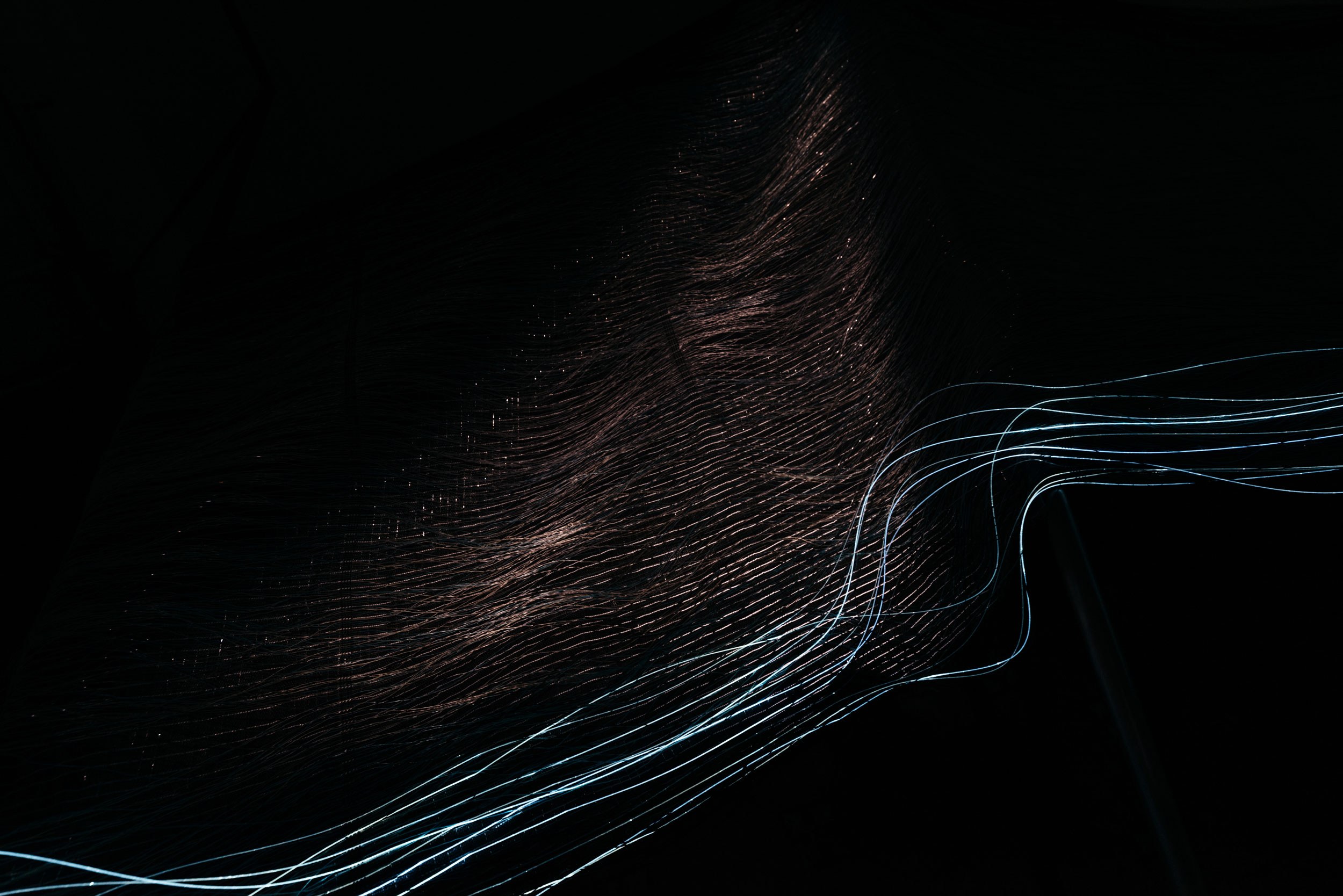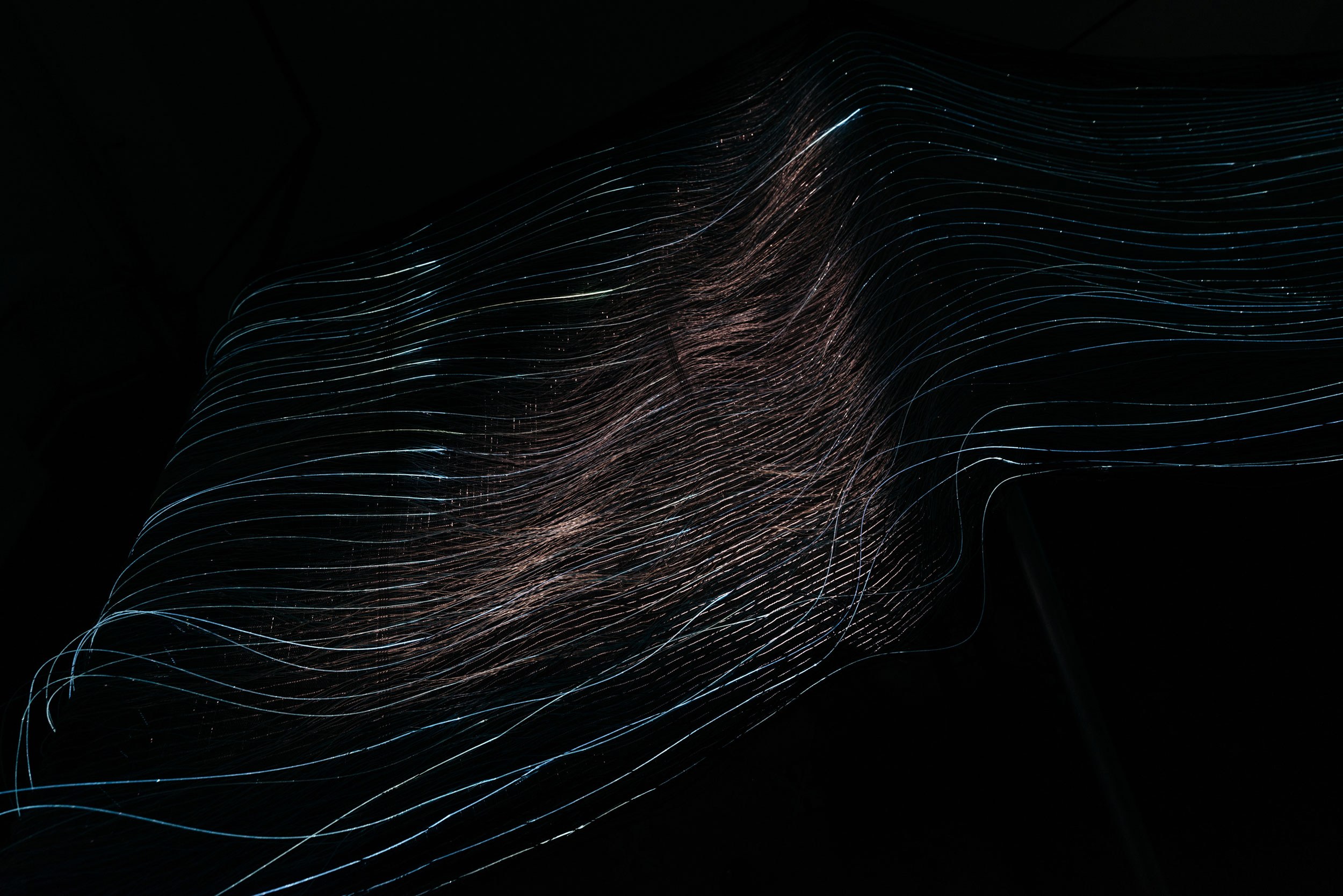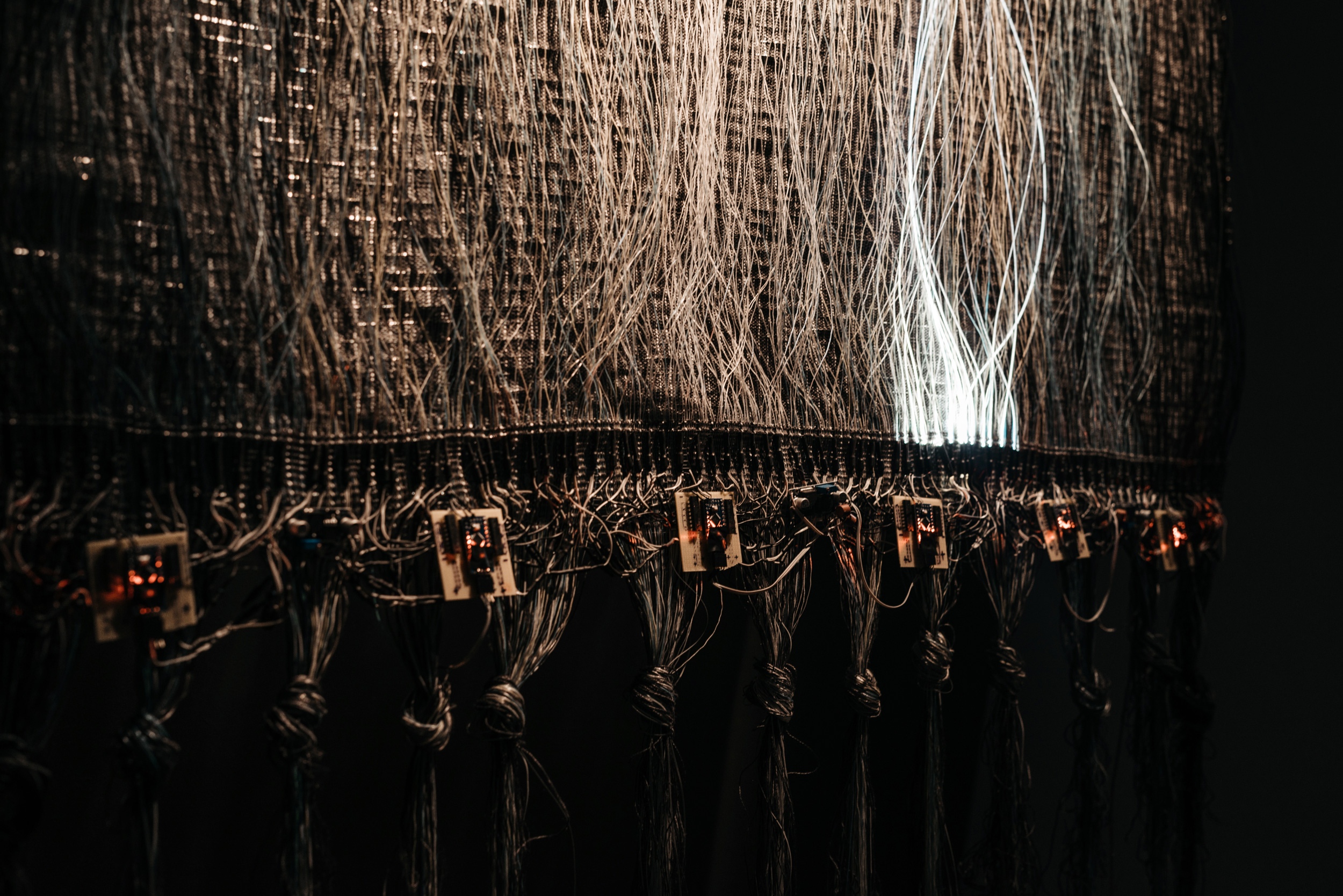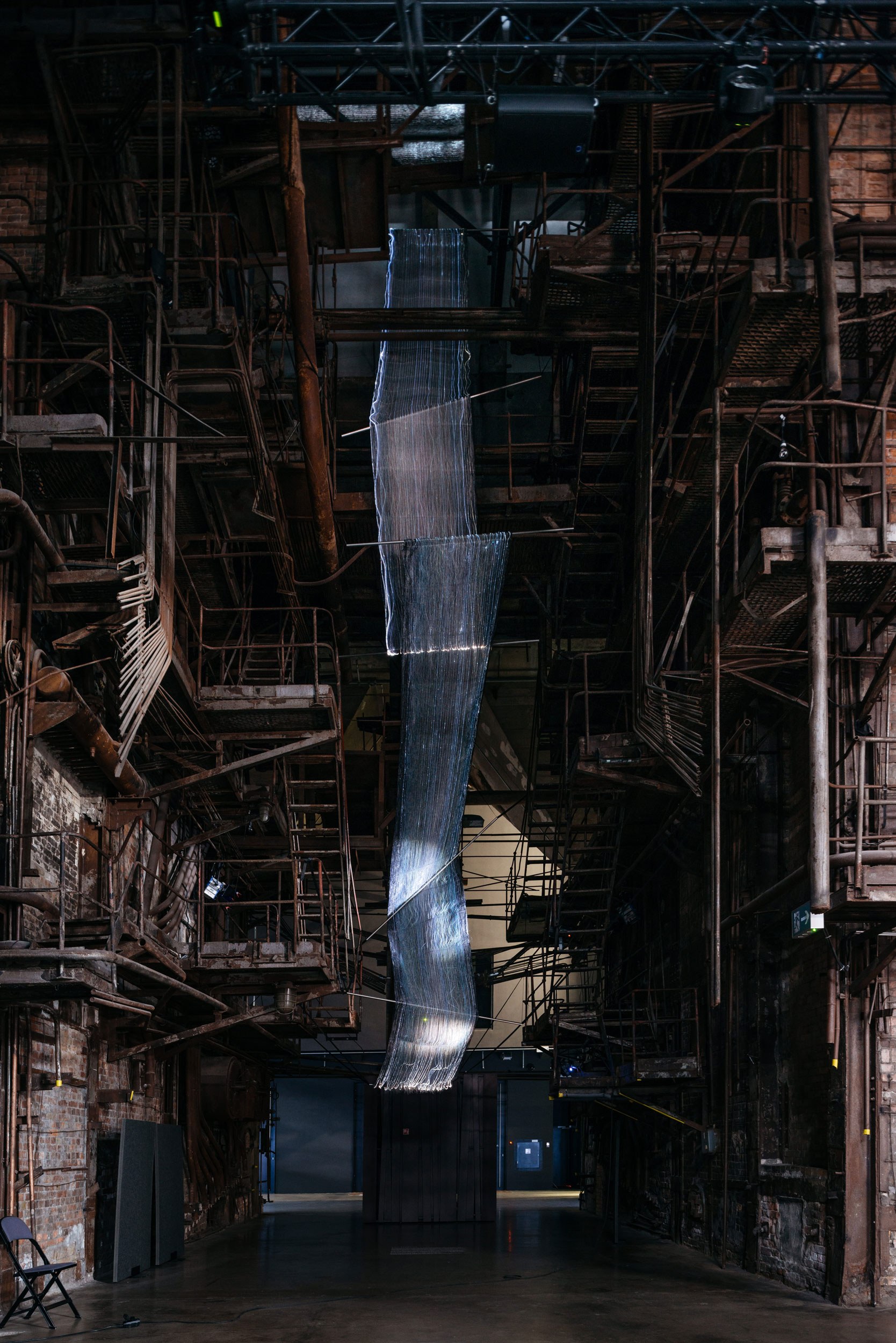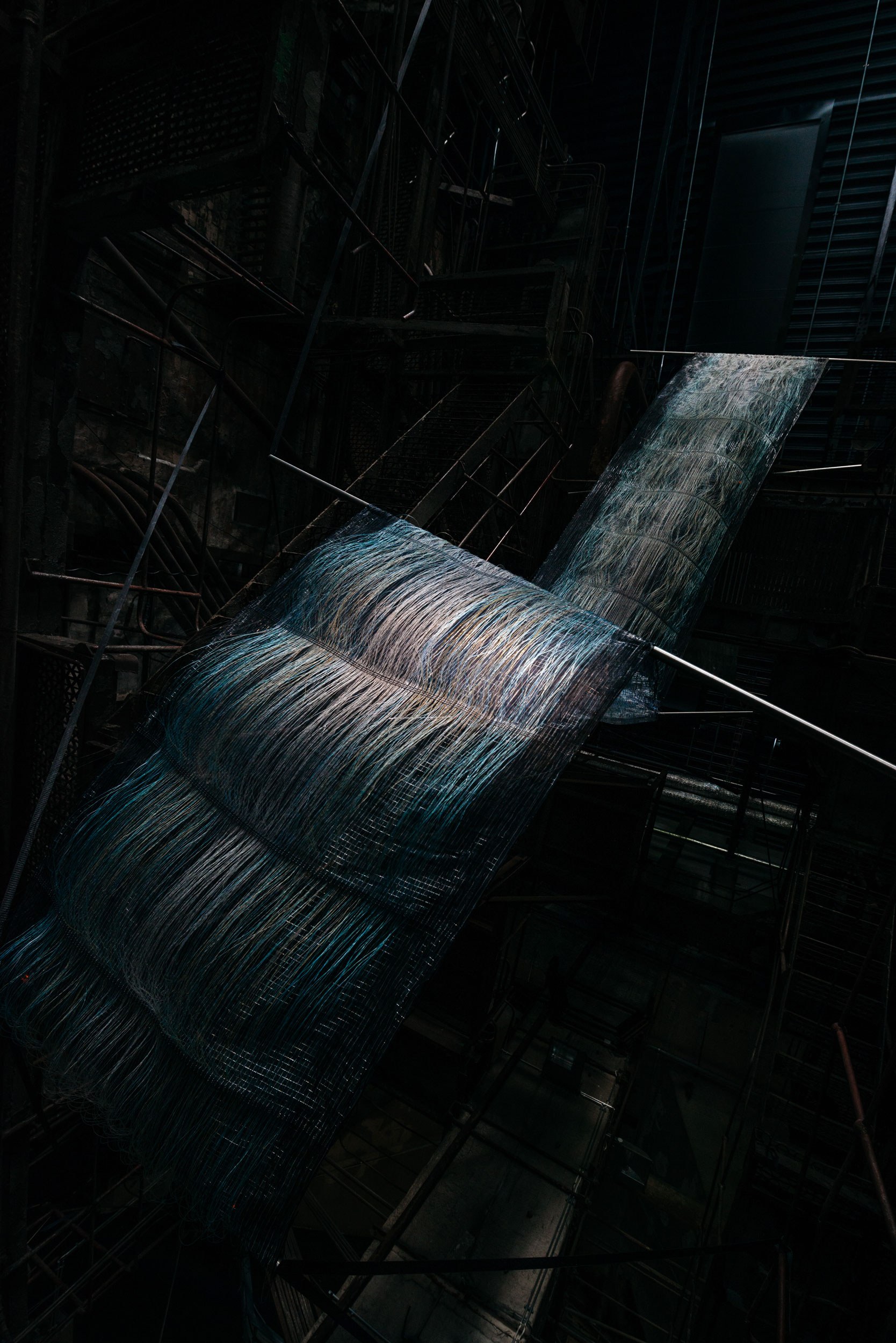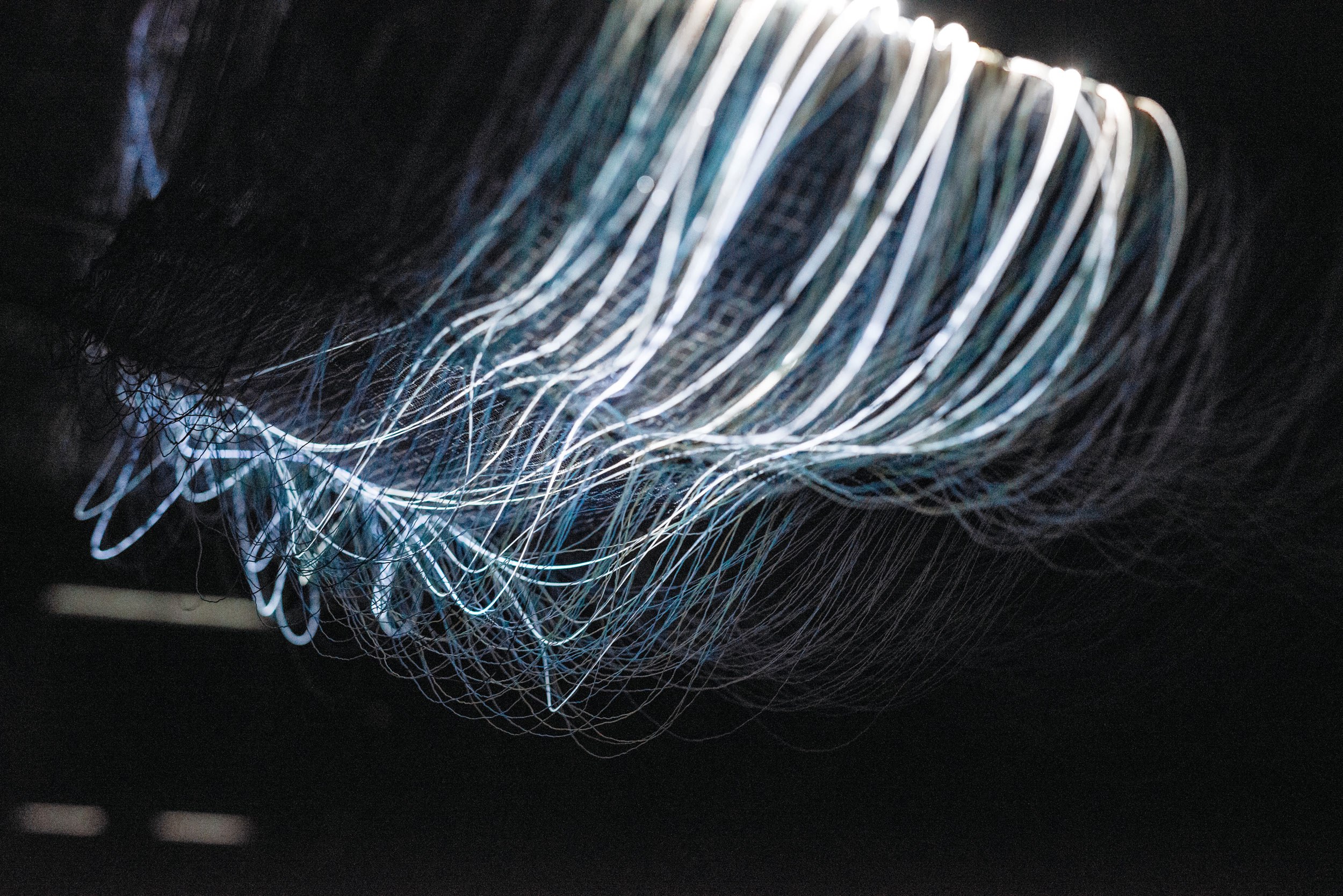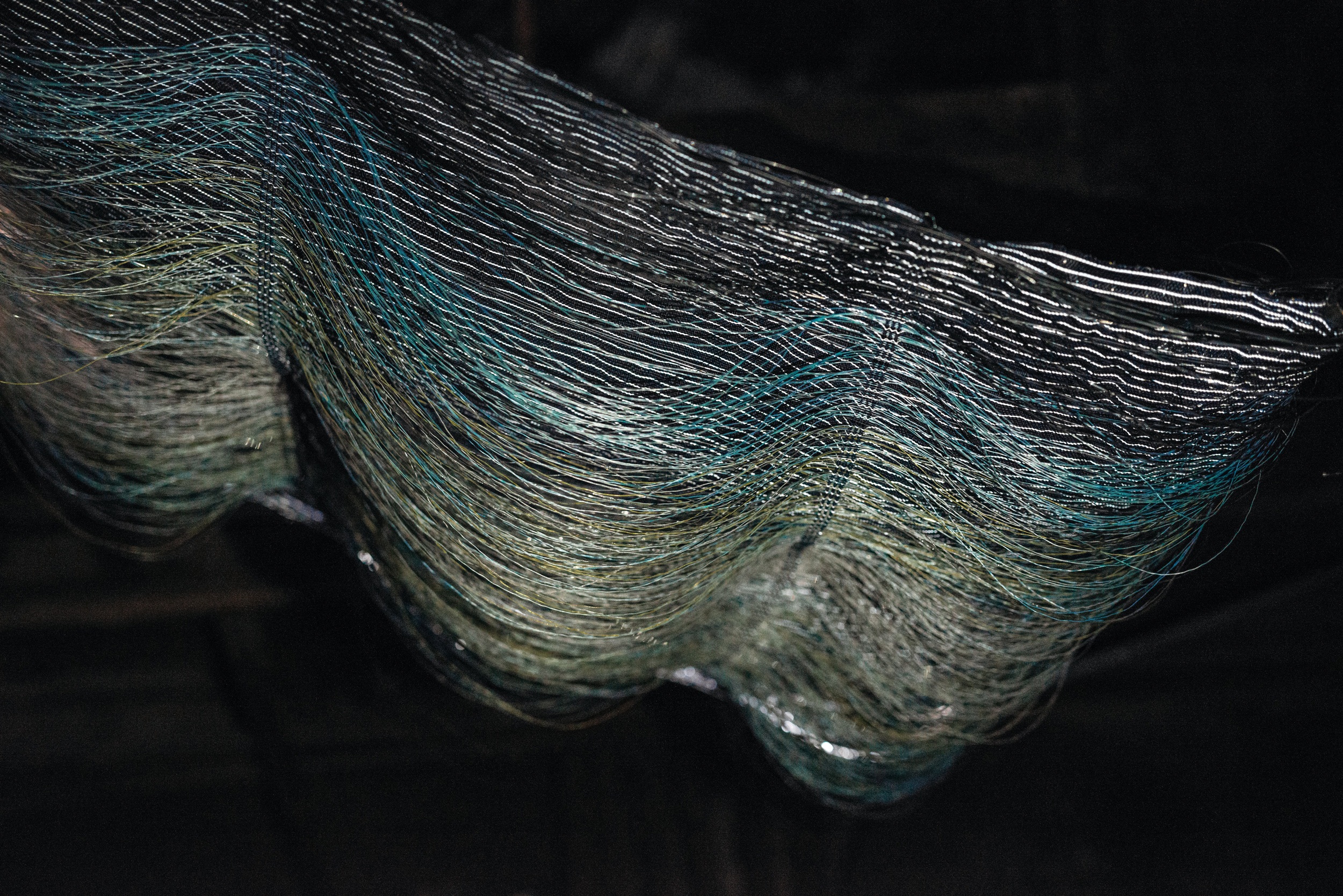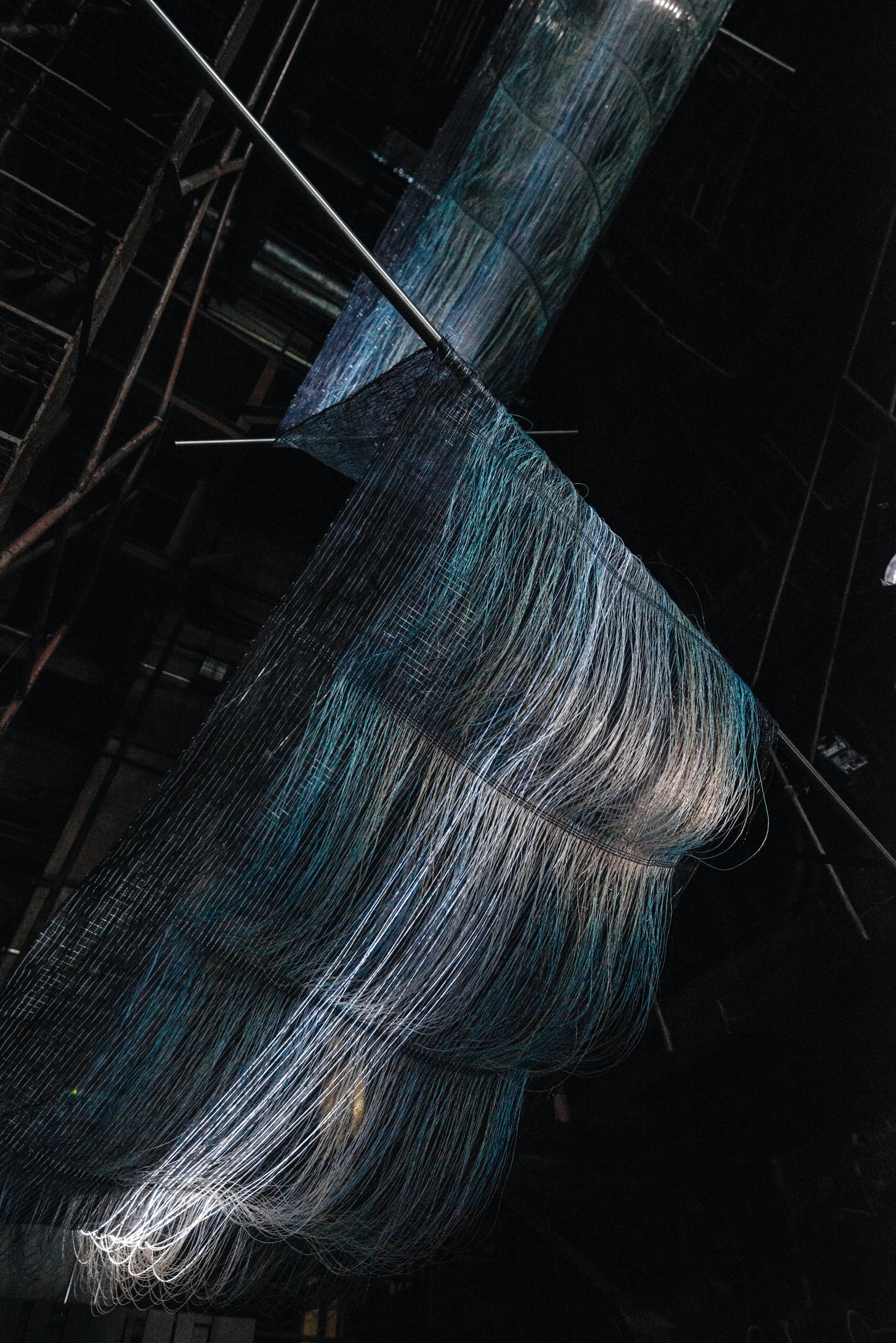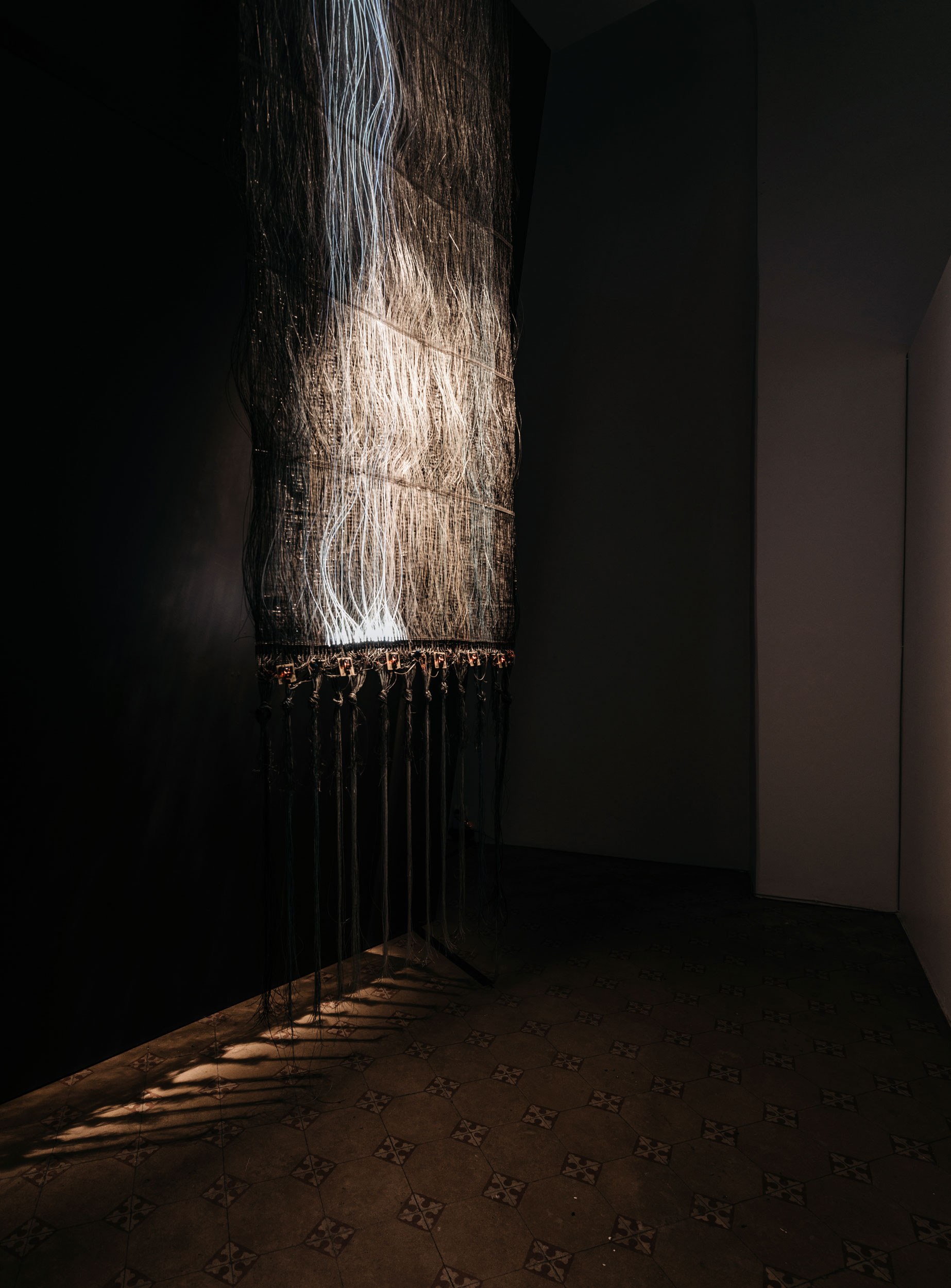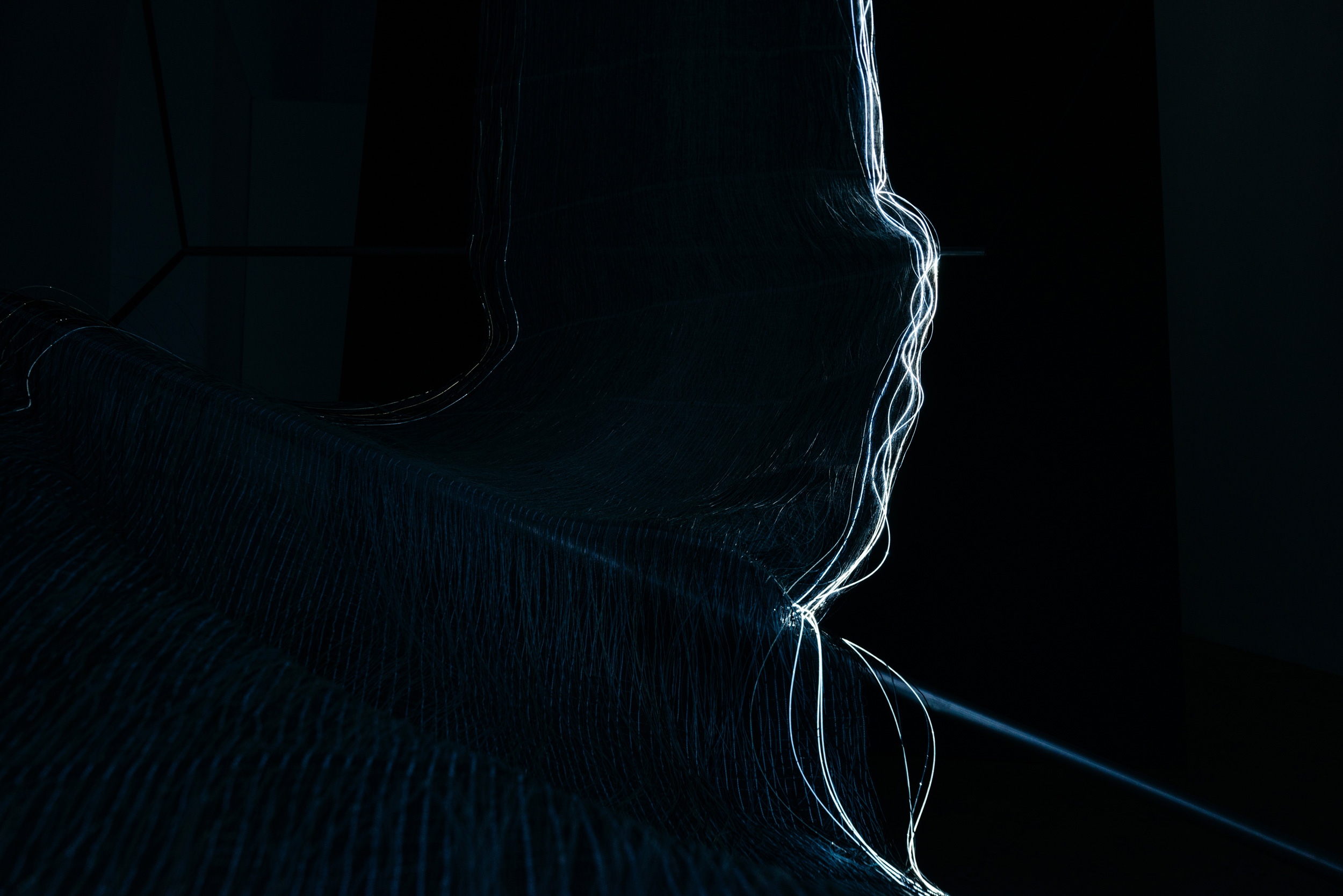Live Streams
There is a fabric in front of you, which is handwoven on a loom, while the yarn—tinted through irrigation technique from Japan. Meanwhile the fibers, which the artists have weaved into the fabric, are programmed to react. Somewhere inside this fabric are receptors, nerve endings made from textile and signals, which receive information about the outside world over the internet. When a stronger gust of wind sweeps over the sea—the fabric reacts. When a wave rises with the autumn storm, the fabric moves too. If you are currently observing a wave uncurling in the fabric, then at this moment something similar is happening right now in the sea a hundred kilometres away from here. This is technological telepathy between the fabric and the climate, a utopian communication, where two different universes comprehend one another without words or seeing each other.
The live stream weaved into the thread brings us information from tens of kilometres away, but above all it shows us the beauty of response. Yes, you are presently in the same room with a human-like creature who is almost like yourself. She is a fabric-shaped robot, a Someone knitted into the textile. Different mythologies have the human created out of various materials. Clay, a stump, a rib. Here she is made of yarn and reactions.
But let’s not go too far. The highest praise for an artwork isn’t that it in some way resembles a human. It is much more poetic when, as Peeter Mudist has said, “the thing itself emerges, not an image.” This textile is not an image, but its own self. It is important to be in the same room with this textile and experience something new. To experience an object’s response to the surroundings, to watch it undulating, to sense the breeze blowing and to monitor the degree of one’s own and the object’s sensitivity. (Which is more sensitive?) The artists have created a space and brought in here an almost living object, and asked you to come into the room as well, so that both you and the object would acquire a new experience. So that it would react to what you are doing—and vice versa. Dialogue? I wouldn’t be so banal. This here, after all, is something poetic.
Text by: Eero Epner
Translation to English: Alina Astrov
The installation was presented in Tallinn, in HOP Gallery
Graphic design: Jan Tomson
Photo credits: Tõnu Tunnel
